How-To Guides
How to Clean a Moldy Dishwasher and Prevent Mold from Coming Back
AZparts Team
Updated on July 11, 2025
8 min read
A moldy dishwasher is more than just an inconvenience, it can lead to unpleasant smells, unsanitary conditions, and even health concerns. Mold thrives in moist, enclosed spaces like your dishwasher, especially when food debris and poor ventilation are involved. In this guide, AZParts will show you how to clean a moldy dishwasher step by step and share proven tips to prevent future mold growth.
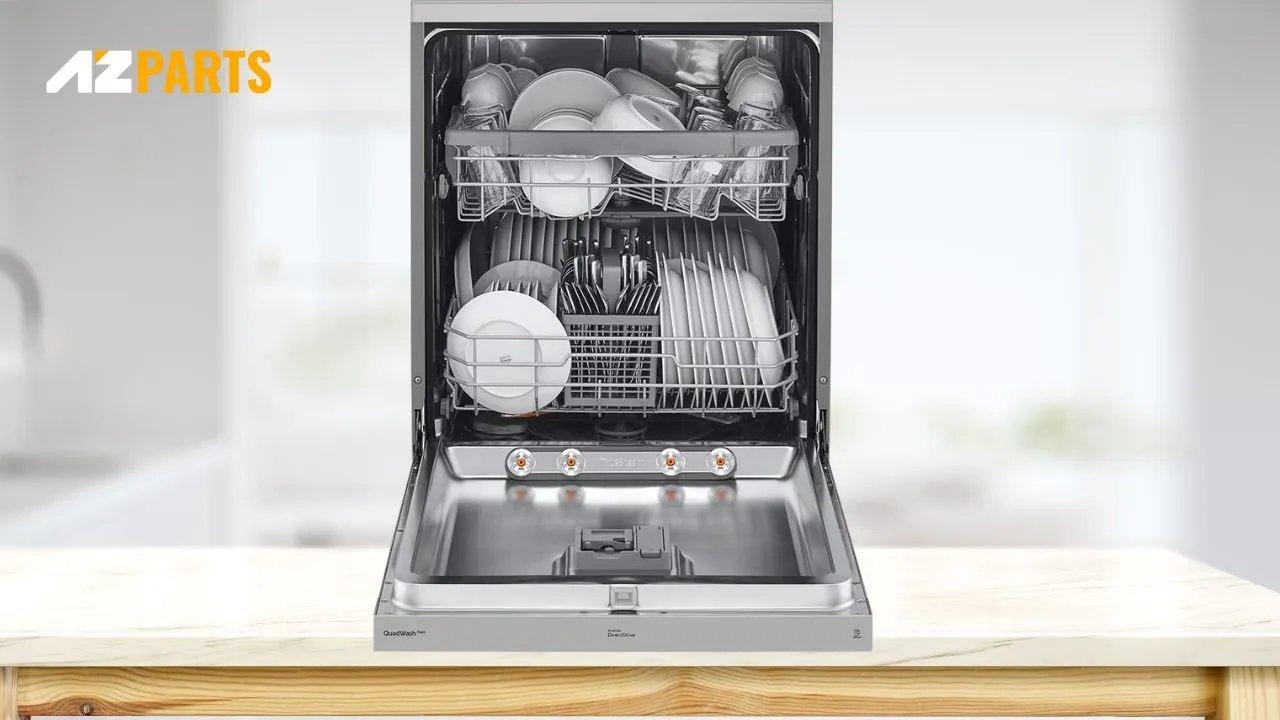
1. How to Tell If There’s Mold in Your Dishwasher
Mold inside your dishwasher is more common than you might think, especially if the appliance is used infrequently or not cleaned regularly. There are several signs that can help you detect a mold problem, and some may be easy to overlook.
- Musty or foul smell: If you smell a sour, musty, or unpleasant odor when opening your dishwasher, mold may be present. While the odor could come from leftover food debris, a lingering smell after cleaning suggests mold growth in hidden areas.
- Visible mold on dishes or racks: You may notice mold growing directly on dishes or racks if the colony inside the dishwasher becomes large enough. This often happens when the dishwasher is not run daily and food remnants provide nutrients for mold spores to thrive.
- Mold in the drain hose: The drain hose offers a dark, damp environment where mold can grow undisturbed. Mold attaches to food particles left in the hose and can spread in areas where water does not flow through completely.
- Mold around the vent: The dishwasher vent remains warm and humid after each drying cycle, creating an ideal environment for mold growth. Mold in this area is often hidden but can contribute to unpleasant smells and spread spores inside the appliance.
- Mold behind the dishwasher: If you detect a moldy odor but see no visible signs inside the appliance, mold may be growing behind or underneath it. Moisture from a leak or condensation can cause mold to form on nearby walls, cabinets, or flooring, requiring a full inspection behind the unit.
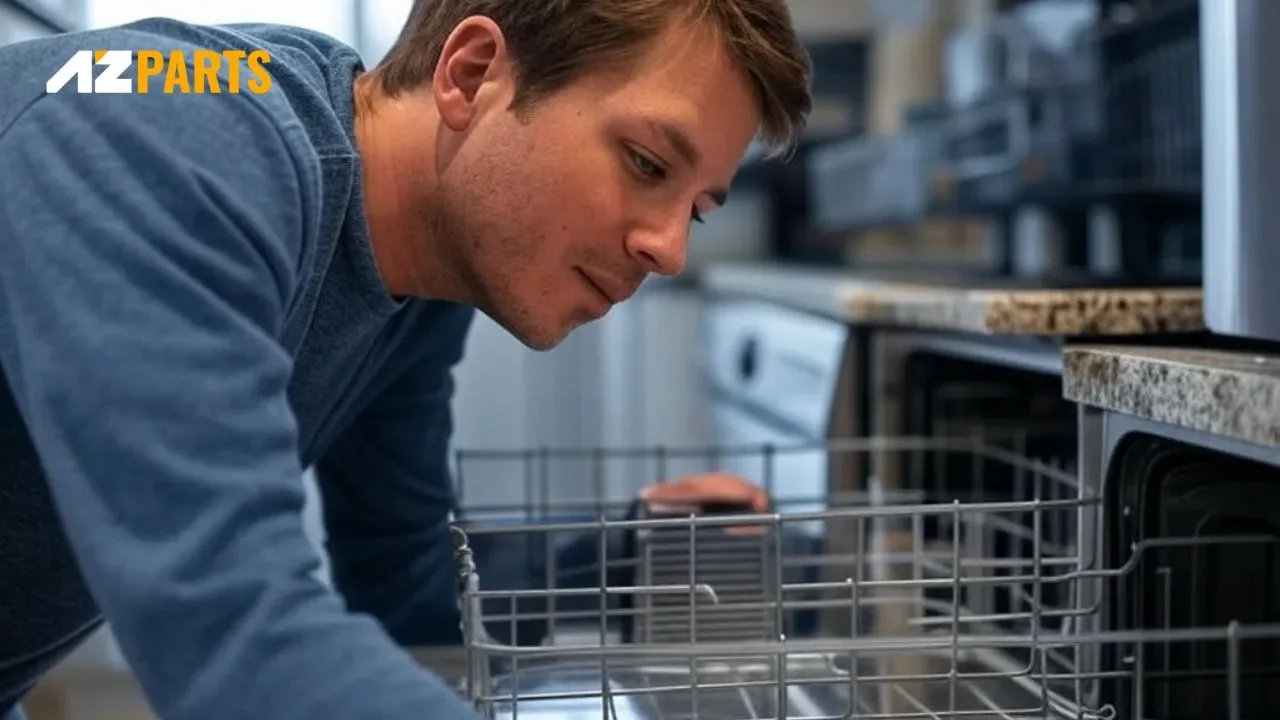
If you smell a sour, musty, or unpleasant odor, mold may be present (Source: AZParts)
2. Where Does the Mold Come From?
Mold forms inside your dishwasher due to a combination of moisture, warmth, and organic debris. The interior of a dishwasher is naturally humid after each wash cycle. When water remains trapped and food particles are not properly rinsed away, these conditions create the ideal environment for mold to grow.
If you do not clean your dishwasher regularly, leftover grime can build up on filters, gaskets, and hidden corners, allowing mold spores to thrive and spread. Over time, the mold can become more difficult to remove and may lead to unpleasant odors or visible contamination on dishes and surfaces inside the appliance. Regular cleaning and proper maintenance are essential to prevent mold from developing.
_1752209429.webp)
Mold forms due to a combination of moisture, warmth, and organic debris (Source: AZParts)
3. What You’ll Need
To clean a moldy dishwasher effectively, you should prepare the right tools and cleaning supplies. These items will help you remove mold, eliminate odors, and restore your appliance’s cleanliness.
- Rubber gloves
- Soft-bristled brush or old toothbrush
- Microfiber cloth or sponge
- Dish soap
- White vinegar
- Baking soda
- Bowl or dishwasher-safe container
- Screwdriver (if needed)
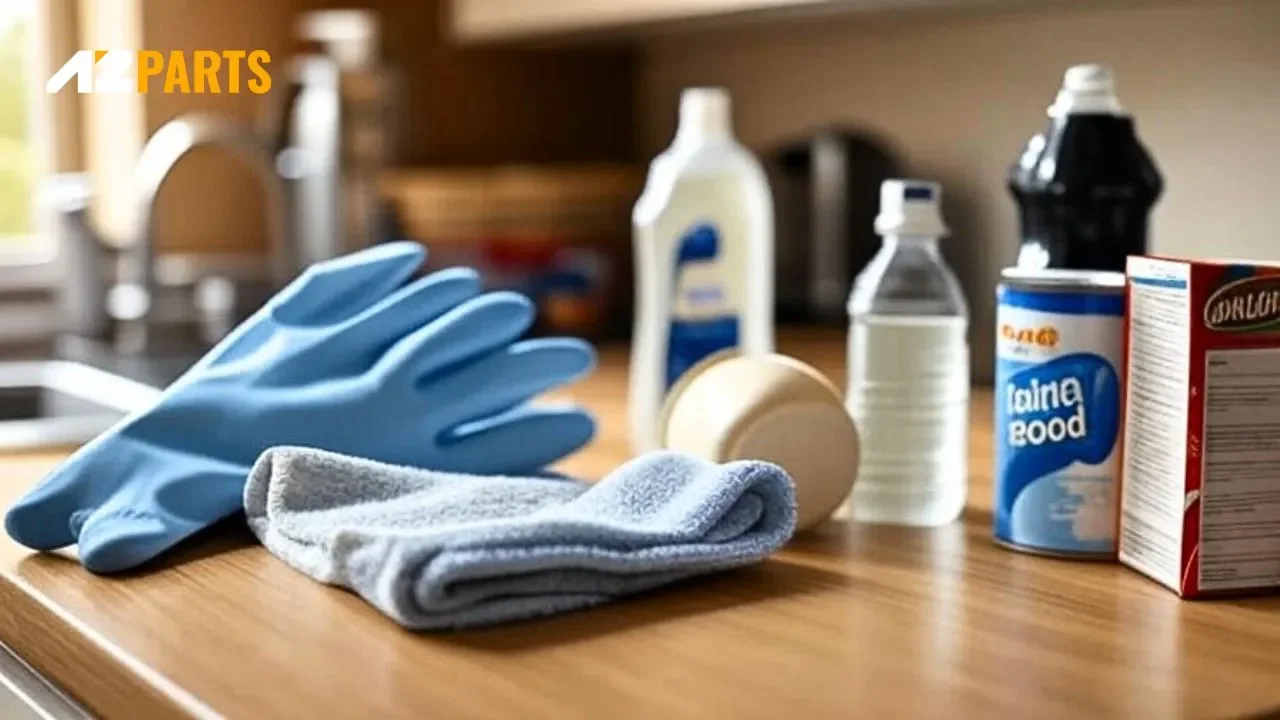
To clean a moldy dishwasher effectively, you should prepare the right tools and cleaning supplies (Source: AZParts)
4. How to Clean a Moldy Dishwasher: Step-by-Step
If you notice a musty odor or see signs of mold inside your dishwasher, you need to take immediate action. Mold not only affects the cleanliness of your dishes but also poses health risks if left untreated. Follow these step-by-step instructions to clean your dishwasher thoroughly and eliminate mold effectively.
4.1. Step 1: Empty the Dishwasher
You should remove all dishes, utensils, and removable racks from the dishwasher. This step ensures that you have full access to every part of the interior that needs cleaning.
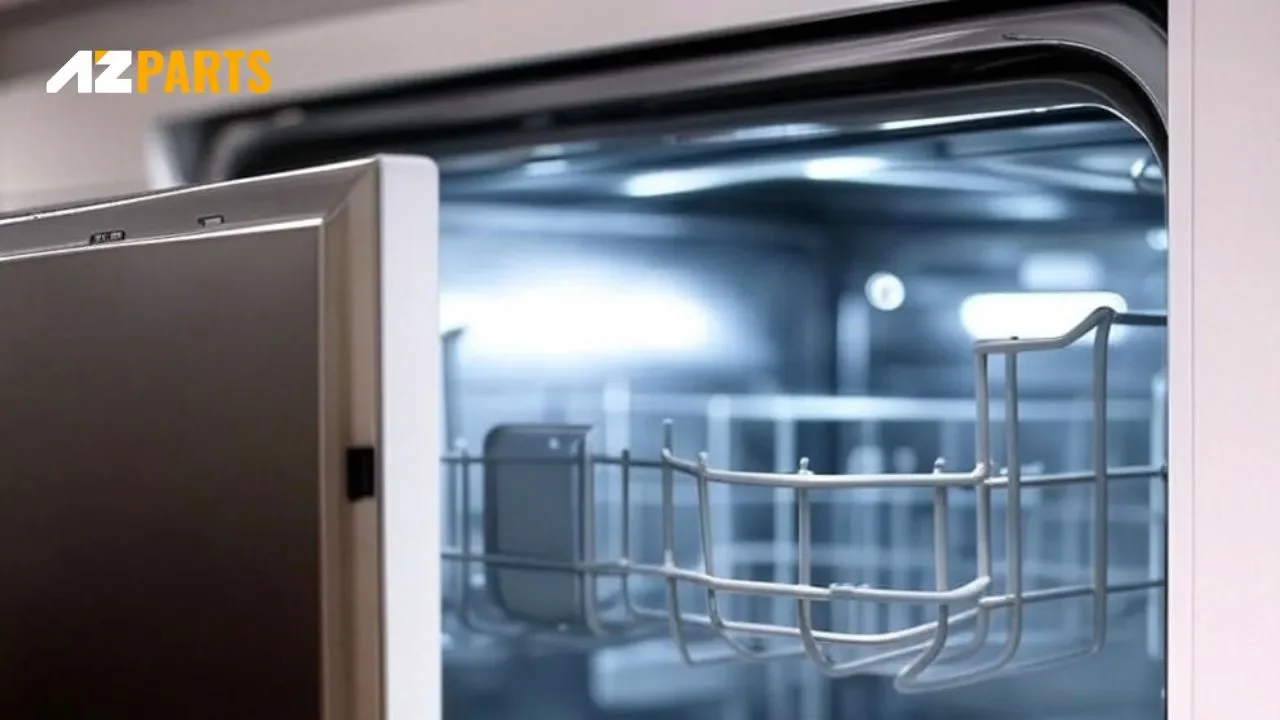
First, you should remove all dishes, utensils, and removable racks from the dishwasher (Source: AZParts)
4.2. Step 2: Clean the Filter and Drain Area
You need to locate the filter at the bottom of the dishwasher and remove it carefully. Soak the filter in warm, soapy water and use a soft brush to scrub away any food particles or mold. You should also clean the drain area around the filter to remove hidden residue.

You should also clean the drain area around the filter to remove hidden residue (Source: AZParts)
4.3. Step 3: Scrub the Rubber Door Gasket
You should inspect the rubber gasket around the dishwasher door. Using a sponge and mild detergent, scrub the gasket thoroughly to remove mold and grime that may be hiding in the folds and edges.
_1752209530.webp)
You should inspect the rubber gasket around the dishwasher door (Source: AZParts)
4.4. Step 4: Clean the Spray Arms and Interior Walls
You should examine the spray arms to ensure they are not clogged. Clean the spray holes with a soft brush or a toothpick if needed. Then, use a sponge or cloth with warm, soapy water to wipe down the interior walls, especially in corners where mold often accumulates.
_1752209557.webp)
You should clean the spray holes with a soft brush or a toothpick if needed (Source: AZParts)
4.5. Step 5: Deodorize and Disinfect with Vinegar and Baking Soda
Place a dishwasher-safe cup filled with white vinegar on the top rack of the empty dishwasher. Run a full hot water cycle to help kill remaining mold and remove odors. After that cycle, sprinkle a cup of baking soda across the bottom of the tub and run a second short hot water cycle to further deodorize the appliance.
_1752209582.webp)
You should sprinkle a cup of baking soda across the bottom of the tub to further deodorize the appliance (Source: AZParts)
5. How to Prevent Mold in Your Dishwasher
Keeping your dishwasher free from mold plays an important role in maintaining a clean and hygienic kitchen. By establishing effective maintenance habits and consistent cleaning routines, you can protect your appliance and ensure its optimal performance over time.
- Practice regular cleaning and drying: You should make sure your dishwasher is completely dry after each use to prevent moisture buildup. Leaving the door slightly open after a cycle helps air circulate and keeps the interior dry, reducing the chance of mold growth.
- Clean the filter frequently: You should inspect and clean the dishwasher filter regularly to remove trapped food particles and excess moisture. This simple step helps eliminate one of the most common sources of mold inside the appliance.
- Avoid overloading and pre-rinse your dishes: You should avoid placing too many dishes in the dishwasher, as overcrowding can block airflow and trap moisture. Scraping off food residue before loading helps prevent mold and improves overall cleaning performance.
- Clean problem areas thoroughly: You should pay close attention to high-risk zones such as the door gasket, corners, and crevices where mold tends to grow. Use a vinegar and baking soda solution or dishwasher-safe cleaner to wipe these areas regularly and keep them mold-free.
- Wipe down exterior surfaces: Mold and grime can also develop on the outside of your dishwasher. You should wipe down the exterior regularly to maintain a clean surface and reduce the spread of mold spores.
- Schedule annual professional maintenance: You should have a technician inspect your dishwasher at least once a year to detect hidden mold or mechanical issues. Professional maintenance helps extend the life of your appliance and ensures it stays in peak condition.
_1752209608.webp)
You should make sure your dishwasher is completely dry after each use (Source: AZParts)
6. FAQs About Moldy Dishwashers
6.1. Is it safe to use a dishwasher with mold?
No, it is not safe to use a dishwasher with mold. Mold can spread to your dishes and release harmful spores into the air, which may pose health risks, especially for people with allergies or respiratory conditions. You should clean and sanitize your dishwasher thoroughly before using it again.
6.2. Can I use bleach to clean a moldy dishwasher?
Yes, you can use bleach to clean a moldy dishwasher, but only if your dishwasher does not have stainless steel parts. Bleach can damage stainless steel over time. If your dishwasher includes stainless steel, it is safer to use white vinegar and baking soda for cleaning and disinfecting.
6.3. What causes pink mold in dishwashers?
Pink mold in dishwashers is usually caused by a type of bacteria called Serratia marcescens. This bacteria thrives in moist, warm environments and feeds on soap and food residue. Regular cleaning, drying, and removing food debris can help prevent pink mold from developing.
Keeping your dishwasher mold-free is essential for maintaining clean dishes and a healthy kitchen environment. By following the proper cleaning routine and adopting smart prevention habits, you can eliminate mold and stop it from returning. For replacement dishwasher filters, dishwasher door gaskets, and more parts that help your dishwasher run smoothly, shop trusted components at AZParts. Your cleaner, fresher appliance starts here.
Contact Information:
8 The Green, Ste A, Dover, Delaware 19901-3618, United States
Learn more about how to repair and clean your dishwasher properly:
Dishwasher
Further Reading
Further Reading

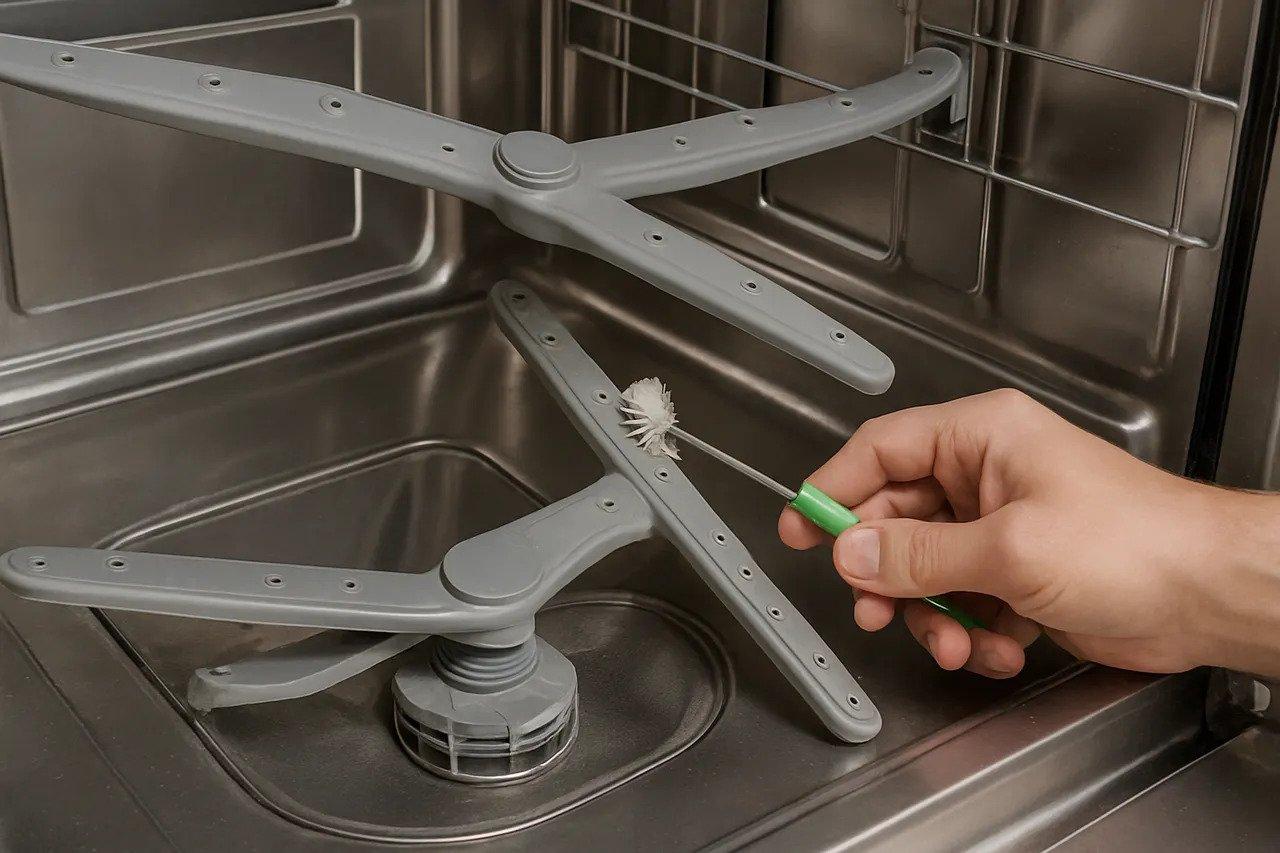

_1748246700.jpg&w=3840&q=75)

